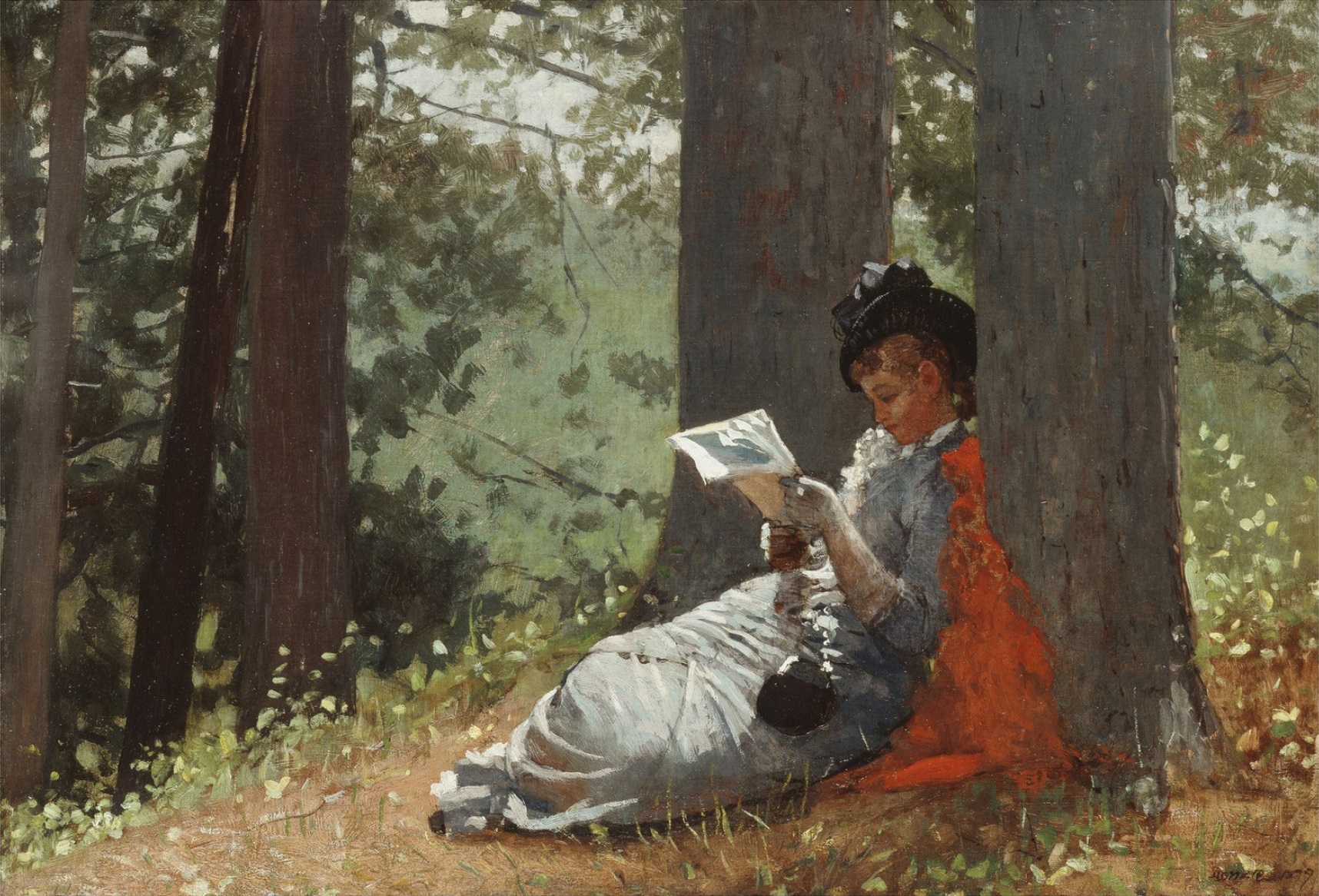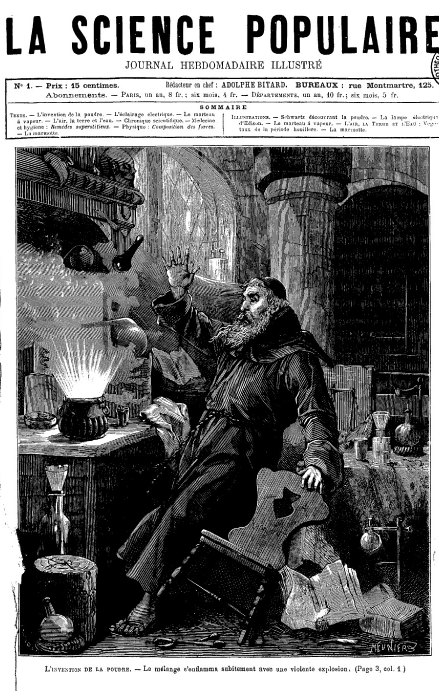
August 20, 2017, by Brigitte Nerlich
Making science popular: Science communication in 19th-century France
Some weeks ago I saw a tweet in my timeline which contained an engraving of an iguanodon skeleton. The skeleton had been exhibited in Brussels and its picture appeared in the 1883* issue of the French popular science magazine La Science Illustrée.
This made me think of an old blog post of mine entitled “Making Science Picturesque”, where I had talked about popular science magazines in France. In that post I had not mentioned La Science Illustrée, as I had focused on titles like Le Magasin Pittoresque. Intrigued by the iguanodon, I looked La Science Illustrée up on Gallica, the digital arm of the Bibliothèque Nationale, where you can now access many of the old journals that popularised science in France in the 19th and early 20th century. I read the introduction to the first issue which said that this journal was the successor to La Science Populaire which I had also not mentioned in my blog post.
This stimulated yet again my interest in the history of science communication. Numerous popular science magazines and journals were published in France during the 19th century. And yet none of them were mentioned in a recent special issue by the Journal of Science Communication which focused on the history of science communication.
Popularising science in 19th-century France
After rummaging around a bit, I discovered that there are some books and articles dealing with such popular science magazines in the UK and Germany, for example, and that there are quite a few dealing with the popularisation or ‘vulgarisation’ of science in France. One article/book in particular seems to be important in this context, but I couldn’t access it online: Catherine Benedic (1990). “Le Monde des vulgarisateurs”, in: La science pour tous, sur la vulgarisation scientifique en France de 1850 à 1914, edited by Bruno Béguet, Paris, Bibliothèque du conservatoire national des arts et métiers.
I found one review of this work from 1993 (but again I could only access a bit of it) which points out with some surprise that “in that most commonplace communicating task of all – the communication of science – the French have been so successful, so often, for so long. With its splendidly equipped science museums, its network of science centers, and strong and constant government support, France is today leading the world in promoting scientific literacy and the public understanding of science” – as it seems to have done for quite a while.
Although there must be much more out there than I could find through a quick search, I just want to mention two more names. One is the philosopher and historian of science Bernadette Bensaude-Vincent who has carried out some interesting research on popular science writers, such as Camille Flammarion, for example. Flammarion tried to frame popular science as something ‘cool’, as opposed to academic science, which was framed as rather ‘cold’ (a topic that would deserve some more digging). The other is Annie Lagarde-Fouquet, a historian of popular science writing, who has written extensively about Édouard Charton, editor of the seminal Magasin Pittoresque, and his fight against ignorance and for social equality – a really fascinating story.
In this blog post I can, naturally, not provide an in-depth study of French popular science magazines for English readers. Instead I just want to translate the introductions to the first issues of La Science Populaire (1880) and La Science Illustrée (1888), so as to give readers a taste for what’s out there.
La Science Populaire
 La Science Populaire was published weekly between 1880 and 1884. It ran to 188 editions and its editor in chief was Adolphe Bitard, a French journalist and scientific publisher. He founded this journal and, some years later, just before his death, La Science Illustrée. His foreword to the first edition of La Science Populaire reads as follows:
La Science Populaire was published weekly between 1880 and 1884. It ran to 188 editions and its editor in chief was Adolphe Bitard, a French journalist and scientific publisher. He founded this journal and, some years later, just before his death, La Science Illustrée. His foreword to the first edition of La Science Populaire reads as follows:
“We are founding today a journal of a new genre, responding, we believe, to new public needs, especially to this thirst for learning which has spread amongst the masses, and which seems to be a distinctive sign of our times. Following an official program, learning to recite all the parts of a parrot, in view of whatever diploma, just to forget the facts once the diploma has been obtained: this is not what this is about. But neither is our aim for readers to become scientists (‘savants’): such an ambition would require that one sacrifices one’s entire life to it, and not everybody has the means to do that. However, people want to have access to true notions about everything, to be instructed about phenomena that happen in nature and their cause and they want to be informed about the constant march of progress in matters of human knowledge, as well as of discoveries made by our hardy explores travelling across known and unknown worlds. […] [After saying that the journal will take ‘science’ in its broadest sense, including natural history, industry, the study of people and nations, medicine, agriculture etc., etc., the foreword goes on to say]: We would also like to add that we wish to give a large place to curiosity, so fruitful in all sciences: this is to say, that over and above science properly speaking and its serious applications, one will find here its more amusing and recreational applications too, as well as its peculiarities, without forgetting those of the amusing sciences, even the occult sciences.”
La Science Illustrée
 La Science Illustrée was established in October 1875. It ran until 1877. It was then resurrected in 1888 and was published until 1905. I didn’t have access to the 1875 volume, only to the 1888 volume which relaunched the magazine. The editor in chief was again Adolphe Bitard and, after his death, Louis Figuier. Here are some extracts from the 1888 letter to the readers:
La Science Illustrée was established in October 1875. It ran until 1877. It was then resurrected in 1888 and was published until 1905. I didn’t have access to the 1875 volume, only to the 1888 volume which relaunched the magazine. The editor in chief was again Adolphe Bitard and, after his death, Louis Figuier. Here are some extracts from the 1888 letter to the readers:
“La Science Illustrée is a new tool of popularisation (‘vulgarisation’) which takes a place that has been left vacant for too long [referring probably to La Science Populaire…]. […] Its ambition is not to compete with grand scientific journals, such as La Nature, La Revue rose [La Revue Scientifique], L’Astronomie, or L’Électricien and other specialist publications that have already caught the public’s favour, but which necessarily have rather specialist clienteles. Instead, our publication will be popular through and through and will speak the language of ordinary people (‘la langue de tout le monde’); its price will make it accessible to people with even the most modest means […]. Yes, la Science Illustrée is written in ordinary language (‘la langue usuelle’), so as to convey matters of science more clearly, but on/in its own terms […]. What can we add, apart from saying that while reporting on the scientific news, we will always be on the frontline in the struggle for progress. […] We will provide exact notions of everything; useful and pleasant suggestions, for meditation and recreation; and finally, in order to speak to the eyes as well as to the mind, we will use […] illustrations, more than any other analogues publication has ever done before.”
Science for all
These two magazines stand very much in a tradition of French science magazines which tried to bring science to the people and which are currently celebrated in Paris through an exhibition entitled ‘Sciences pour tous’ (science for all). These magazines tried to combine education and entertainment, information and pleasure. They attempted to make science accessible, not by turning people into full-blown scientists nor by reducing science to the parroting of facts, indeed to enumerating ‘the parts of a parrot’! They endeavoured to satisfy people’s curiosity and thirst for knowledge, especially for useful and amusing, even occult knowledge, which was very much in vogue in science and society at the time. They wrote about science in ordinary language but without dumming down. They also wanted to speak to the mind and the eye at the same time by using amazing illustrations. And finally, they believed that by disseminating science and knowledge and decreasing ignorance they might help reduce social inequalities and contribute to social progress. Can modern science communicators still learn from these early ambitions and attempts at making science public/popular?
If you are or have been in Paris for your summer holidays and are interested in the history of science communication, you may want to see or have seen an exhibition entitled
Sciences pour tous, 1850-1900 which is open until the end of August! Send photos!
*I have checked, and it seems the article entitled “L’Iguanodon” by A. Bitard seems to have appeared on 1 December 1887.
Images: Featured image: Girl reading under and oak tree by Winslow Homer, 1879; the front page of the first volume of La Science Populaire was cropped from Gallica; the front page of the first volume of La Science Illustrée was copied from Wikipedia.

Andrew Mendelsohn has written about how the Pasteur Institute copied Robert Koch’s Imperial Institute of Hygiene, which itself was a copy of Pasteur’s lab. Is something like this going on with the popularization of science? Emil du Bois-Reymond modeled his popular essays on Sainte-Beuve’s. Julius Rodenberg based the “Deutsche Runschau” on the “Revue des Deux Mondes.” Are the popular French journals of science you’re looking at copying ones in Britain and Germany?
Apologies for the typo.
Ah that is a very good question! But do you mean the popular German journals based themselves on The Revue des Deux Mondes?? That would make sense to me. Having said that I haven’t looked at any popular German journals!! So this is just a hunch – more work to do. Perhaps I should have a look at this? https://www.amazon.de/Wissenschaftspopularisierung-19-Jahrhundert-naturwissenschaftliche-%C3%96ffentlichkeit/dp/3486565516 und das: https://www.academia.edu/4254685/Vom_Kosmos_zur_Wunderwelt_-_%C3%9Cber_popul%C3%A4rwissenschaftliche_Zeitschriften_einst_und_jetzt._2006_